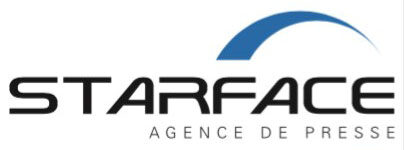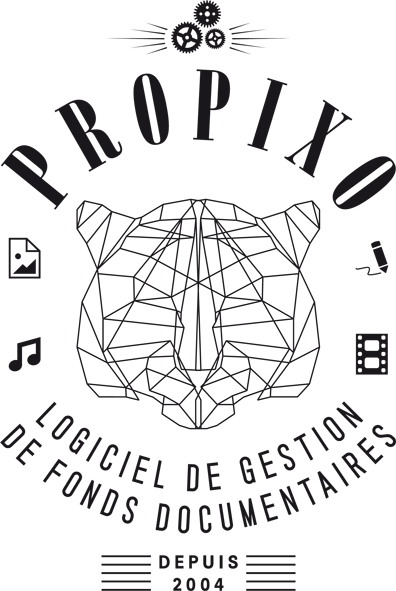
![]()
On January 18, the Mayor of Paris, Bertrand Delanoë will present the Lucas Dolega 2012 prize to Emilio Morenatti, a Spanish photographer working for the Associated Press.
It is the first edition of this new prize created by the Lucas Dolega association in memory of this young photographer who perished after being hit by a tear-gas grenade while on location in Tunisia.
The jury of this first edition was presided over by Daphné Anglès, (The New York Times – Europe) and was comrprised of Armelle Canitrot (La Croix), Barbara Herrmann, (Stern – Paris), Kathleen Grosset, founder and Director of the Maison Européenne de la Photographie à Paris (MEP), Alain Mingam, photojournalist and member of the advisory board of Reporters sans frontières (RSF), Laurent Rebours (AP France), Dimitri Beck (Polka Magazine), Patrick Chauvel, reporter photographe and Jean-François Julliard, General Secretary of RSF.
Read more on La lettre de la photographie
Among the 130 reportages sent by 98 photographers from 22 countries, the jury selected Emilio Morenatti’s work entitled « Displaced in Tunisia », a story about Libyan refugees on the Tunisian border during the early days of the war in Libya. An award for a remarkable story by a man who covers news around the world for AP with an artificial leg. In between two year-end holiday celebrations, Emilio Morenatti answered a few questions for “La Lettre”.
The “75” : A reknowned school of Arts and Images for Documentary Photography in Brussels
Visiting the “Septantecinq » always makes me regret not having been a student there. The bright central building is in a park with spacious and inviting courtyards. The workshop spirit is very present. There are prints lying about, and despite the fact that the school is in French speaking Brussels, many languages can be heard in the hallways. We are in an evironment of creation and exchange. Discussions with professors are frequent, as students are free to approach their professors throughout the development of their projects.
At the end of a long hallway, a black and white laboratory. The scent of developer is abundant and students can be seen retouching their prints with brushes.
A mere arts department of a University, the “75” moved to the neighboring Brussels commune of Woluwé-Saint-Lambert in 1969 where it became the Ecole Supérieure des Arts Plastiques offering workshops in ceramic, graphic arts, engraving painting, photographie and printing. The name comes from the original street number.
The photography school quickly became known for the documentary direction it took under the guidance of Yves Auquier in the spirit of such photographers, Dorothea Lange, Diane Arbus, Walker Evans, Henri Cartier-Bresson, Robert Capa or Paul Strand. Yves Auquier trained the current professors : Jean-Marc Vantournhoudt, (French based Belgian), Vito Gisonda (Italian), Hugues de Wurstemberger (a Swiss photographer for the Agence Vu’), Savvas Lazaridis (Greek photographer) and Philippe Jauniaux (Belgian photographer).
With the International Erasmus exchange program, over 50% of the students are French. There is no entrance exam, but applicants must undergo an interview with the Professors.
When did you learn of the existence of the Lucas Dolega Award ?
I heard about the Lucas Dolega Foundation following the death of our colleague; but I didn’t know about the Lucas Dolega Award until the call I received from the jury announcing that I had won the prize. Actually I didn’t apply for the award myself; it was my company –The Associated Press- who applied for me.
Had you met or heard about Lucas Dolega before entering the prize ?
I never met him, I was in shock when I heard the sad news of his death that day in Tunisia. It was a dramatic blow for me and for all of my colleagues.
After your injury in Afghanistan did you ever think of retiring from photojournalism? What are the challenges you now face in your work?
I never thought to stop doing photojournalism. Actually -during my recovery- all my energies where focused on coming back to my job and recovering my position as a photojournalist. I was completely convinced from the beginning of the accident that I would find the way to get back to the ground and tell stories through my photography again. The recovery was not an easy task, it took me a long time to get used to the prosthetic leg. You can imagine, after losing a leg, you have to learn how to walk, how to run or how to make daily activities again. The recovery process has not finished yet. Actually, I think I will never be fully recovered from the wounds. However, I try to compensate for the lack of physical skills by being more clever when looking for photos and stories. The assignment on the Tunisia border was very interesting and not too complicated to cover. The dramatic stories of thousands of people staying in a huge refugee camp on the border area were waiting to be told – and most of those refugees there were open to tell us their stories. Our responsibility there as photojournalists was to show another face of the tragedy of the Libya war.
Now, I want you to explain to our readers when and how you started taking pictures? We know that you were born in Spain in 1969, but can you tell us something about your youth and your first approach to photography?
I was studying graphic design when my brother began studying photography. I will never forget the first time he invited me to see his darkroom. I was 22 years old and it was my first contact with photography. My brother showed me how black and white photos were developed by “magic”, and I was completely amazed with the process of developing. That discovery probably changed my life and since that moment, I have never stopped taking pictures. A few months after discovering photography and the darkroom I learned that simply holding a camera was a perfect excuse to choose the best point of view for any event and to witness reality – I have always been a very curious guy. I didn’t have any experience as a photographer when I started to sell photos to a local newspaper in the city where I grew up and my photos were very bad technically. However, I started to learn by covering hard news, chasing police cars and firefighter trucks on my motorcycle on their way to the spot. This is how I started working for the local newspaper as a photographer. It happened almost 30 years ago.
When and how did you start your collaboration with AP and what is your position with this international agency?
I was working for the EFE Spanish news agency when The Associated Press director of photography Santiago Lyon called me to join them in 2004. My first assignment for AP was to cover the situation in Afghanistan, being based in Kabul for one year. It was a big challenge for me, as Afghanistan was on the front pages and I was the only foreign photographer based in the country at that time. After that intense year I was sent to the Middle East, based in Jerusalem, where I was covering hard news for a few years. Then I was sent to Pakistan, where I lived for almost two years. Now I am living in Barcelona and am traveling around the world covering hard news as an AP staff member.
Will you come to Paris to receive the Lucas Dolega award and participate in the opening of your show?
I plan to attend the ceremony in Paris. However it always depends on the news and possible assignments.
Links
http://www.lucasdolega.com/prix-lucas-dolega
http://lens.blogs.nytimes.com/2010/03/26/behind-41
!
http://www.youtube.com/watch?v=W8QH71Dernière révision le 2024/03/03 a 7:15
- « The Stringer »
« Trang Bang, j’ai toujours l’impression que c’est arrivé hier » par David Burnett - 19 décembre 2025 - « The Stringer »
L’enfer est pavé de bonnes intentions,
mais ça reste l’enfer ! - 4 décembre 2025 - Patrimoine photographique de Sygma
Un jugement hors du bon sens,
enterre un scandale ! - 28 novembre 2025








